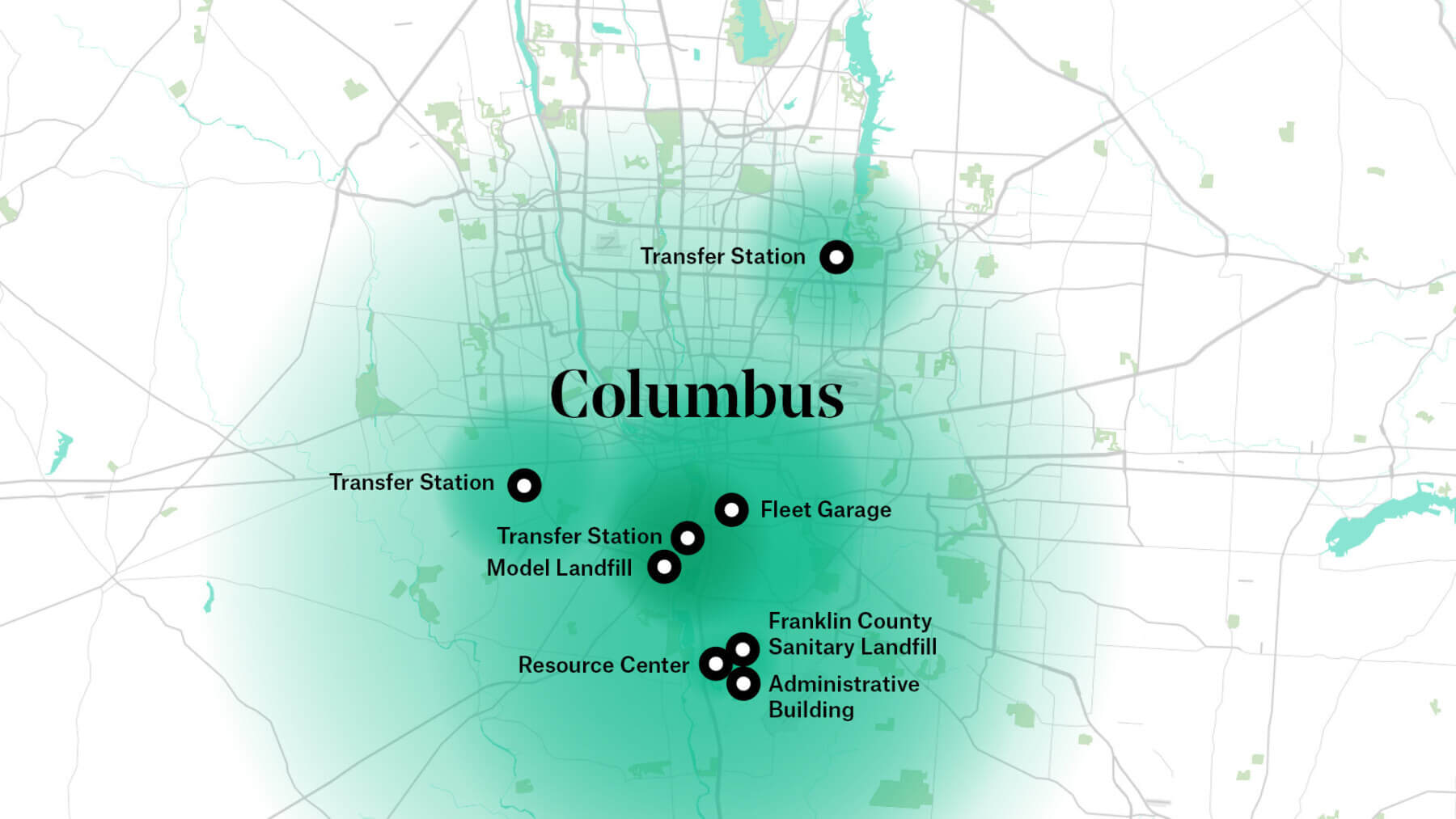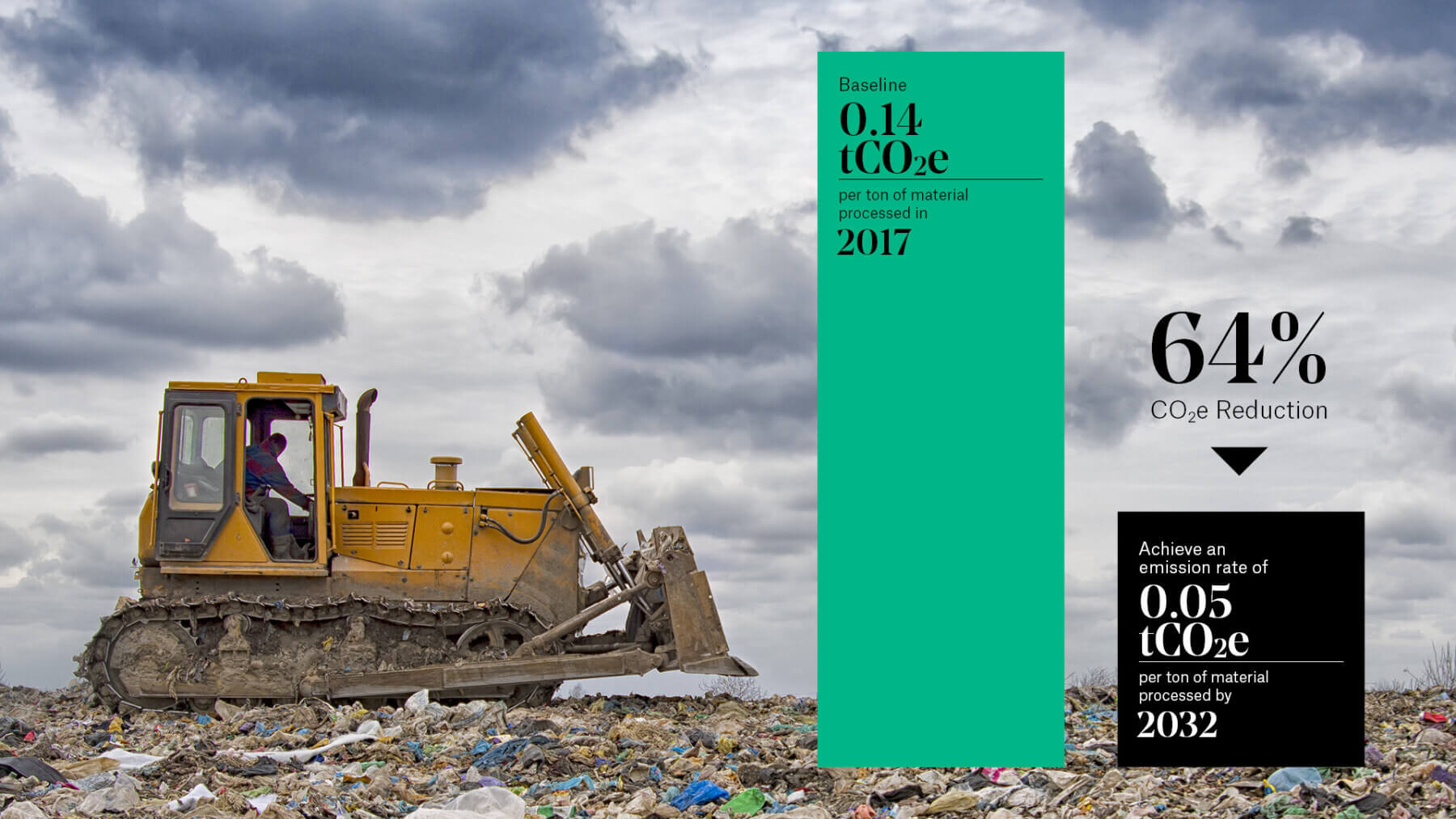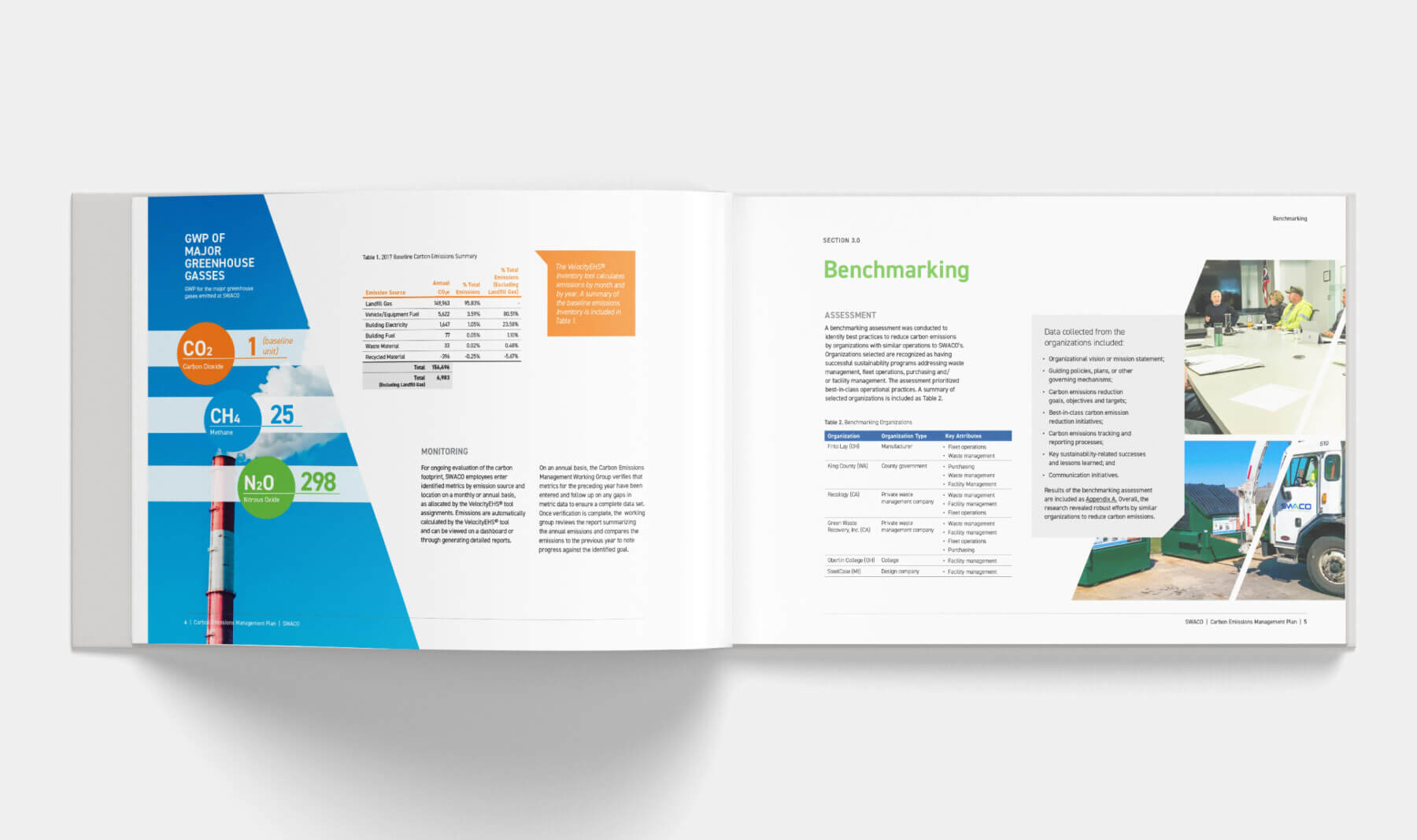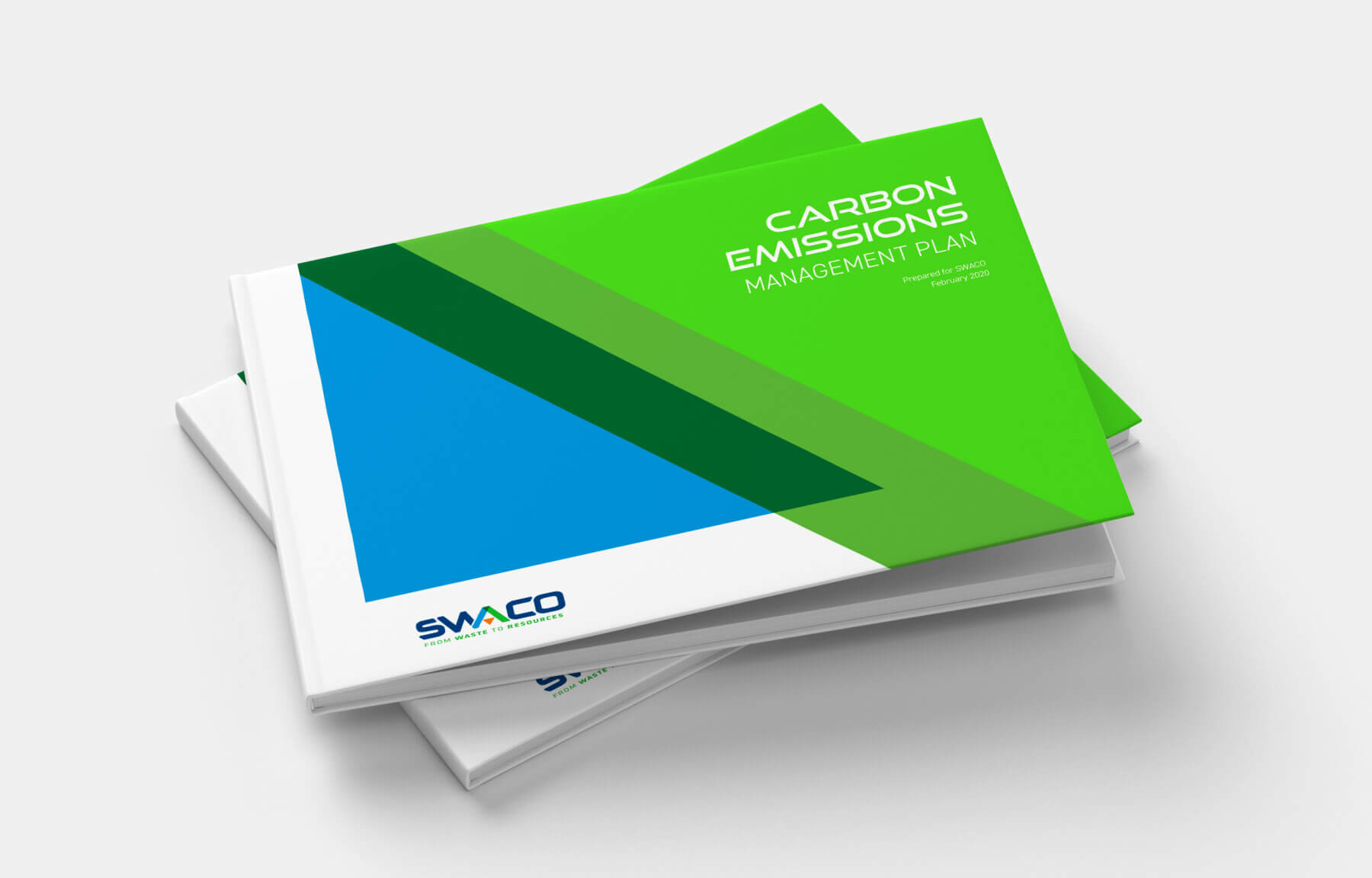Quantifying the Carbon
Evaluating SWACO’s carbon footprint required first identifying the organization’s sources of emissions to provide a baseline reference point for developing future organizational goals and priorities. After identifying facilities and assets owned and operated by SWACO, the Gresham Smith team calculated the organization’s carbon footprint using the methodologies outlined in the Local Government Operations Protocol Version 1.1, a well-regarded resource from the International Council for Local Environmental Initiatives and The Climate Registry.

Benchmarking for Best Practices
Gresham Smith identified organizations with similar operations to SWACO for benchmarking and identifying best practices to reduce carbon emissions. Data collected from the organizations included the vision or mission statement; guiding policies, plans or other governing mechanisms; carbon emissions reduction goals, objectives and targets; carbon emissions tracking and reporting processes; key sustainability-related successes and lessons learned; and communications initiatives.

Setting Strategic Goals
After considering the organization’s baseline emissions, the standard industry practices identified during the baseline assessment, and SWACO’s existing vision, mission, guiding principles and goals, Gresham Smith helped SWACO identify an overarching goal for reducing carbon emissions with accompanying strategic initiatives. To calculate the target, we utilized an industry-recognized model created by the Science-Based Target Initiative (SBTI), which considers the carbon emission reductions necessary to meet the Paris Agreement objective to limit the global average temperature increase to 2.7°F. SWACO’s set the bar high, with an overarching organization-wide goal to reduce their carbon emissions by 64% by the year 2032.

Bringing the Vision to Life
Our team broke SWACO’s strategic initiatives for managing carbon emissions down into four environmental categories:
- Vehicle/Equipment Fuel Management – SWACO will reduce emissions from their fleet of vehicles and equipment by transitioning the fleet from gas and diesel fuel to alternate fuel sources, primarily compressed natural gas and electricity
- Energy Management – SWACO will reduce building electricity and fuel at its headquarters and other facilities by implementing conservation measures and incorporating renewable energy sources, including wind, solar and geothermal.
- Waste Management – SWACO will reduce waste material by recycling, composting and re-using materials and supporting circular economy practices, including purchasing supplies made of recycled content.
- Landfill Gas Emissions Management – SWACO will reduce landfill gas emissions through public-private partnerships to capture and reuse methane gas generated at the Franklin County Sanitary Landfill.
